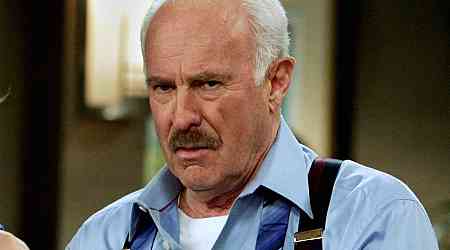
As much of Britain and the world waits on baited breath over King Charles’s cancer treatment, it is only natural that many look back to his mother’s time on the throne with a mixture of nostalgia and regret. It was Queen Elizabeth II’s unchanging nature, epitomized by her unbending adherence to the royals’ unofficial motto of “Never complain, never explain” that made her a constant fixture in the lives of millions of Brits and billions more around the globe. When she died in 2022, nobody under the age of 70 had known another British monarch; few younger than her son could remember George VI, let alone the ill-fated Edward VIII or George V.
[time-brightcove not-tgx=”true”]For all intents and purposes, Elizabeth II was the British monarchy. But her reign—longer than any other British monarch in history—has set the stage for much of the predicament the royal family finds itself in today. Queen Elizabeth II has for years been by far the most popular British royal, a fact that remains true even now.
There are good reasons for this. She served as an unmistakable bridge between the last days of the British empire, which she was born into, and today’s era of instant technology. When she became Queen, communication by telegram was common; when she died, the Telegram app was in equally frequent usage. It is hard, if not impossible, to think of any comparable figure who exerted such influence—however symbolic it was—over such a period of immense transformation.
Read More: The Story Behind TIME’s Commemorative Queen Elizabeth II Cover
Outside of Britain, the Queen played a central role in building the soft power of the country throughout the second half of the 20th century. When, after the post-war years of austerity and misery, the country established itself once again in the 1960s as a world power to be reckoned with, thanks to the dual strengths of the canny Prime Minister Harold Wilson and the telegenic young Queen. Wilson’s virtues were political; Elizabeth’s those of being able to temper regality with apparent accessibility.
The late Queen undoubtedly had her flaws. She was not a woman of any artistic or intellectual interests (unlike her unfairly maligned husband), and was happiest when spending time with her corgi. She could be a poor judge of character; her open preference for her second son, the now-disgraced Prince Andrew, and continued loyalty to him was testament to that. And she could be slow at reading the public mood, too. She notoriously took days to publicly address the death of Princess Diana in 1997. She was by all accounts reluctant to do so even then, feeling that she had been bounced into doing so by then Prime Minister Tony Blair. And she could justly be criticized for sticking to conservatism rather than considering the idea of progress when it came to the monarchy; by the end of her reign, it was still recognizably the same institution, battered and shop-soiled but intact, that she had inherited, much to her shock and surprise, while in Kenya on Feb. 6, 1952.
Yet the Queen’s greatest flaw was one that she had no control over, and that was that she set an impossibly high expectation of what monarchy should be that her successors could never hope to live up to. Queen Victoria did much the same, dying in 1901 after nearly 64 years on the throne, and allowing four subsequent monarchs to flounder in her wake —from her son Edward “Dirty Bertie” VII to George VI. Only Queen Elizabeth II was able, half a century later, to wipe away memories of her great-great grandmother’s reign, by doing as little as she could to upset the monarchical applecart. (She never exercised a single meaningful veto throughout her reign.) There was much sentimental talk, especially late on, about “the new Elizabethan age.” But what her reign more closely resembled was a second Victorian age, even as British expansionism and concomitant exceptionalism was replaced by a slow, managed decline into a middling power.
None of this was the late Queen’s fault. She did everything that could be expected from her, sometimes even more. So many hands shaken, so many ribbons cut, so many “Have you come far?” enquiries. She—or at least those around her—had an undeniable knack for finding the appropriate phrase on public occasions. Her dismissal of the Duke and Duchess of Sussex’s accusations of royal racism after their Oprah Winfrey interview with “recollections may vary” appeared to end any serious threat to the monarchy. Her promise during COVID-19 that “we will meet again” comforted many at a time when hysteria and uncertainty dominated. She may, or may not, have enjoyed her portrayal in The Crown as an ingénue-turned-battleaxe.
Read More: Meghan and Harry’s Interview Won’t End the Monarchy. But a Reckoning Is Coming
But one thing that her lifelong belief in duty would never have allowed was to quit. Recollections of those dread days in late 1936 never disappeared, when her uncle Edward VIII, later Duke of Windsor, abdicated the throne to marry the twice-divorced Wallis Simpson—passing the crown over to her father. Her decision to remain Queen until the last possible moment, frail but still shaking hands with the disastrous Prime Minister Liz Truss, was personally commendable but has left Charles III with the impossible task of inheriting a legacy too large for anyone to bear.
It’s interesting to wonder what would have happened had King Charles III inherited the throne years or decades earlier. A younger Charles would perhaps have been a more energetic, at times even interventionist monarch. Instead, Charles assumed the throne at 73, and will likely be remembered by posterity as a warm-up man in reverse, whether he reigns for two years or 20 more.
Read More: Why King Charles III Will Be Worth the Wait
The world, or at least the parts of the world that still care about the British monarchy, may be be forced to look at the 41-year-old Prince William to revitalize the institution whenever he takes over. Yet a man who has no interest in the religious faith that he will be defender of, who has been beset by scurrilous rumors including adultery, and whose attitude toward the Commonwealth seems to be that it’s best wound up without delay is hardly the steady and dutiful custodian of the throne that his grandmother was.
Shakespeare’s Henry IV once described the crown as “troublesome,” and said that “it seem’d in me/But as an honor snatch’d with boisterous hand.” Elizabeth II dealt with the honor in rather more sober fashion, and succeeded, but she left an impossible inheritance in the process. And that, surely, is her lasting legacy: setting a standard that nobody else could live up to.



























